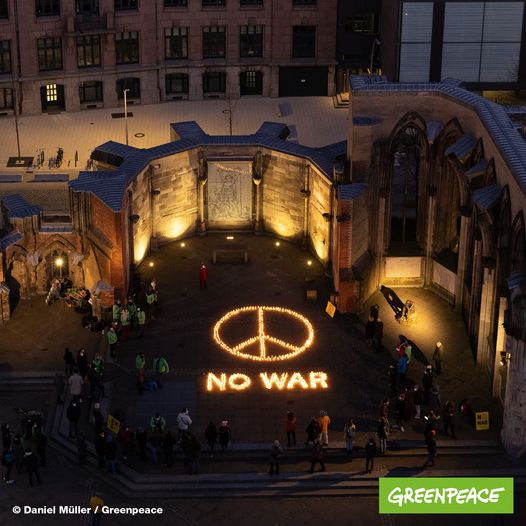Challenges Arise
By 1976, a number of interrelated problems and tensions had begun to develop within the MNS network. Despite the excitement of the burgeoning antinuke movement, many members felt frustrated with a lack of strategic direction in the organization. While in agreement with MNS’s long-term vision, participants were frequently unsure how to best contribute to the variety of movements active at the time. In towns with only a dozen or so MNS members, this lead to a high rate of turnover, as committed organizers moved on to more clearly defined projects; in Philadelphia, some left the Life Center, but many others stayed on, viewing its internal life as the defining aspect of their involvement with radical social change.
At the 1976 Whole Network Meeting, members worked to address the "Philly-centric" way in which MNS was developing by adopting a five-year plan, which encouraged Life Center members to move to promising regions to establish MNS on stronger, less centraiized footings. Owing to the plan and interest generated by the important contributions that MNS had made to Seabrook and other high-profile events, the movement grew to a peak of approximately three hundred active members with many more supporters by the decade’s end." This thickening of the ranks wouldn’t last, however. By the early 1980s, MNS collectives in cities from Chicago to Baltimore had gone through what Twin Cities MNS member Betsy Raasch-Gilman identified as a series of "boom and bust cycles" owing to unresolved questions plaguing ehe group’s work in most parts of the country. "The tension between utopian community and a group of involved activists; the push for perfection in personal and political relationships; the confusion about membership and strategy all could be traced directly to Philadelphia’s model« she claimed in retrospect. (62)
In face, according to Raasch-Gilman, the decline and eventual disbanding of MNS can be attributed to four interrelated factors: a growing emphasis on lifestyle over strategic organizing, the manner in which members carried out antioppression work, weaknesses in the group’s decentralized structure, and a fetishization of the consensus decision-malking process. Evaluating each of these aspects of MNS’s history is complicated because of the decidedly mixed impact each had on the group and the wider antiauthoritarian milieu. MNS pioneered means to respond to problems and limitations that had developed in previous movements, and those methods have had lasting value. At the same time, the group’s own history indicates that these innovations included shortcomings of their own, unanticipated by their advocates.
While many found the sense of community that MNS offered the most rewarding part of their involvement, it also lead to serious tensions that eventually contributed to the organization’s demise. MNS’s prefigurative community attracted some people whose conception of social change diverged sharply from early members’ assumptions, while lt kept others with shared political comrnitrnents away. Its rationale for group living differed in several respects from the often-depoliticized communes and intentional comrnunities formed by counterculturalists in the late 1960s, but this wasn’t always obvious. Some visitors believed that an alternative, communal lifestyle constituted a sufficient form of activism: In line with the utopian socialist tradition, they argued that egalitarian communities could serve as a model of the new society, which through their obvious superiority to other ways of life, would naturally attract more participants and inspire imitation. (63)
Lakey remembers encountering newcomers to the Philadelphia Life Center in the mid-1970s who saw it as another intentional community and "wanted lifestyle to be the leading edge of change." He had to explain to them that "the cutting edge of [MNS’s] understanding of revolution is not lifestyle change. We think of it like ashrams in Gandhi’s ideas, which were base camps for revolution. So what do you do in the base camp for revolution? You get ready to go on the barricades. (64) Yet by the late 1970s, the idea that lifestyle change formed the centerpiece of MNS strategy was pervasive both outside and within the organization. A writer for the Progressive, for example, described MNS as "Quakers gone counter-cultural." (65) Similarly, when Richard Taylor, a founding member, did not immediately list lifestyle change after being asked to describe aspects of MNS strategy during an interview in the late 1970s, the interviewer prompted him "One would be lifestyle and modeling“ Taylor corrected her, remarking, "Well, one would be working with alternative institutions... creating your own." After further prodding, Taylor conceded, "Lifestyle is important, but it’s only one of 5 or 10 key things .. it’s not more important than non-violent direct action, or radical caucuses, or alternative institutions." (66)
While the place of lifestyle in MNS strategy was clear to its founding theorists, not all members and potential participants were as unambiguous in their thinking, and the understanding of the role of community building eventually became muddled. By the late 1970s, Raasch-Gilman saw MNS members fitting into two different categories: the "hard-bitten shop floor organizers," and the "new age hippie flakes". (67) Members of the former group spent long hours encouraging others to participate in pressure campaigns and building coalitions with other organizations, while the latter prioritized thoroughly changing their own perceptions and ways of being in the world. The playfully hyperbolic language in which Raasch-Gilman expressed this distinction indicates that she (and other members) saw value in both tendencies, but points to a conceptually useful tension nonetheless.
MNS’s commitments to simple living, expanding intramovement jargon, and counterculture-derived social norms created a subculture that served to glue rnembers together, but also threatened to alienate nonmembers in the broader Left an the public at large. In September 1976, Madison, Wisconsin, MNS member Janet Hilliker caustically voiced her concerns regarding the subcultural tendencies growing in MNS in a letter to the network’s internal newsletter. "What responsibility do we have to the many people who are culturally unlike us?" she asked. "Is our aim a new uniform society: everyone living in communes, working in food co-ops for lower prices, smoking marjuana, practicing nudity and free love, eating vegetarian, and changing their last names ?" (68) lt took time for members to see that rather than creating a model of the new society, they were establishing one of many possible new lifestyles that grew out of a specific configuration of values that they prioritized. One former member insightfuily reflects, "A lot of what was defining out culture was out rebellion against white culture. So, we were a counterculture, but we were actually counter to white culture." (69) This made MNS’s internal culture less appealing and transformative to people of color, and some white working-class people, who had a different relationship to the dominant, white middle-class culture to begin with.
MNS members certainly were not alone in viewing personal practices and the creation of alternative comniunides as touchstones of radicalism during the 1970s. Besides the movement centered on establishing rural communes, the ecological and feminist movements that MNS contributed to as well as overlapped with were increasingly focusing on developing alternative culture and community. Prominent members of the Clamshell Alliance, such as Cathy Wolff, "blaimed the deterioration of the Clamshell on the run toward pursuit of community for its own sake," according to Barbara Epstein. (70) Likewise, Alice Echols argues that «cultural feminism"- a form that promoted "new lifestyles within a women’s culture, emphasizing personal liberation and growth"-supplanted a more politicaily confrontational "radical feminism" by 1975. (71) In part, the shift toward new lifestyles was due to exhaustion from the sustained confrontation with political enemies that had marked the second half of the 1960s; it also partly constituted an experiment in innovative approaches to social change for antiauthoritarians within the «new social movemenes" who sought different goals than traditional leftists had forwarded.
Lifestyle was a strategy advocated in crucial theoretical treatises of the period, including those offered by anarchists. Though in the 1990s he would famously denounce the tendency toward "lifestyle anarchism," Bookchin stated in Post-Scarcity Anarchism that. "in a more advanced stage of technological development than Marx could have clearly anticipated, a new critique is necessary, which in turn yields new modes of struggle, of organization, of propaganda and of lifestyle." He asserted, "To the degree that workers, vocational students and high scheel students link their lifestyles to various aspects of the anarchic youth culture, to that degree will the proletariat be transformed from a force for the conservation of the established order into a force for revolution." (72) Bookchin and like-minded thinkers of the time were unable to predice the intensity with which advertising executives of the 1970s would work to recuperate alternative lifestyles, harnessing the desire for self-expression to the needs of capitalism to develop specialized niche markets for its ever- larger array of consumer produces, as Thomas Frank and Naomi Klein have since demonstrated. (73) ...
Notes
(62) Raasch-Gilman, The Movement for a New Society" 31.
(63) On the relation of the utopian socialist tradition to anarchism, see Richard Day, Gramsci is dead: Anarchist Currents in the Newest Social Movements (London: Pluto Press, 2005), 91-128; Eunice Minette Schuster, Native American Anarchism (1932; repr., Port Townsend, WA: Breakout Productions, 1999).
(64) Lakey, Interview.
(65) Gordan Burnside, "A New Manifesto," review of Moving toward a New Society, by Susanne Gowan, George Lakey, William Moyer, and Richard Taylor, Progressive, August 1976.
66 Richard Taylor, interview by Margaret Allen and Joan Gibson, n.d., Swarthmore College Peace Collection, MNS Collection, acc. 90A-55, box 9.
(67) Raasch-Gilman, ’"The Movement for a New Society:“ 55.
(68) Janet Hilliker, "M.N.S. questions," September 1976, Wisconsin Historical Society, Movement for a New Society Records, 1974-77, box 1.
(69) Lakey, interview.
(70) Epstein, Political Protest and Cultural Revolution, 60.
(71) Hyde Park Chapter of the Chicago Women’s Liberation Union, "Socialist Feminism: A Strategy for the Women’s Movement quoted in Echols, Daring to Be Bad, 6.
(72), Bookchin, Post-Scarcity Anarchism, 177, 190. For his reevaluation, see Murray Bookchin, Social Anarchism or Lifstyle Anarchism: An Unbridgeable Chasm (Oakland, CA: AK Press, 1995).
(73) Thomas Frank, The Conquest of Cool: Business Culture, Counterculture, and.the Rise of Hip Consumerism (Chicago: University of Chicago Press, 1997); Naomi Klein, No Logo: Taking on the Brand Bullies (New York: Picador, 1999).
As the MNS subculture solidified, members noted with growing anxiety that "the center of gravity was no longer in work in popular movements. . . A quality of introspection became dominant." (74) In part, this inward turn
pages 44 to 49 are omitted on this place
Read also
Movement for a New Society and Contemporary Anarchism - part one
and
[Movement for a New Society and Contemporary Anarchism- part two:
action, community and training]



